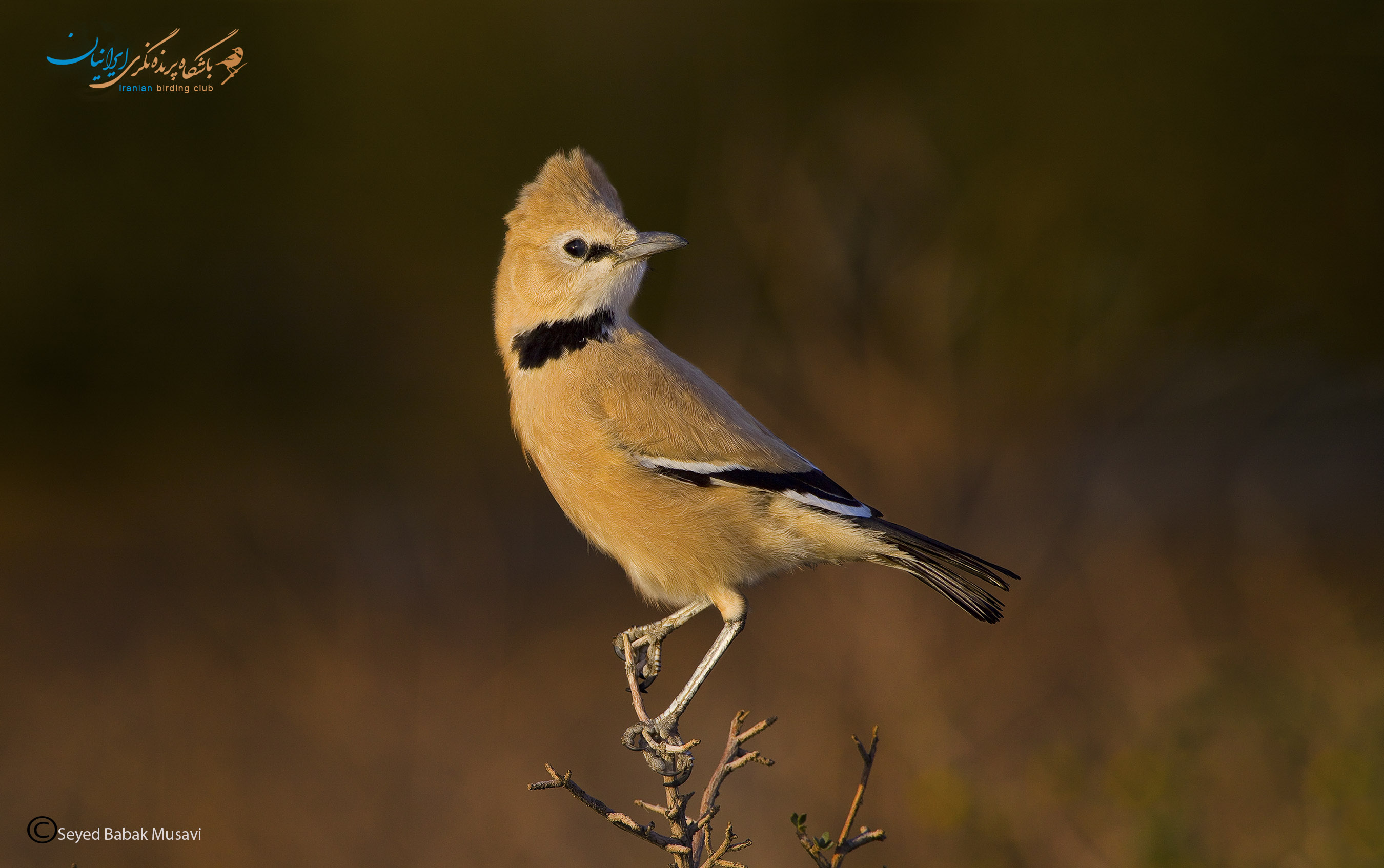
|
|
Iranian (Pleske`s) Ground Jay - podoces pleskei
Iranian (Pleske`s) Ground Jay
Scientific name: Podoces pleskei
Morphological characteristics:
Length: 24-25 cm
Wingspan: 11-13 cm
Identification characteristics: Pink-puff overall, black tail and slightly decurved black bill, also black wings with white double wing-bar which can be seen in flight and triangular black throat-patch. Adults look similar, without seasonal variation and juveniles look like adults, but with sandy-buff color and without black throat-patch.

Diet:
Omnivorous; feeds on insects, especially larvae, small lizards, seeds, and nuts.1
Biological characteristics:
Habitat: Prefers steppes, vast open bushlands in deserts or semi-deserts, especially Zygophyllum plains and seasonal riverbeds covered with Atraphaxis bushes1; inhabits flat sandy desserts with interspersed vegetation.2
Behavior: very shy and vigilant. Flight short with wing-beats.1 When feel a danger, can walk on the ground and run with high speed. Make a series of high squeaky notes usually in the morning.
Breeding: Monogamous; breeds solitarily but territoriality not observed. Nest a small cup of twigs and sticks, lined with mud, wool and hair (from goats, sheep, and camels), built on Zygophyllum eurypterum or Ephedra intermediate bushes, or in dense Atraphaxis spinosa, and rarely on tamarisk shrubs. Usual clutch 3-4, sometimes 2-5 and rarely 1 or 6, sub-elliptical to short sub-elliptical, smooth, slightly glossy eggs, light olive to creamy, densely spotted and blotched olivebrown, 35.3×20.5 mm in size. Eggs hatch after 18-22 days. Chicks, altricial and nidicolous, leave nest in 12-17 days, still remaining on nearby branches and bushes, fed by parents for another 45-60 days.1
Distribution and abundance: the only endemic bird of Iran, can be seen in central dessert basins mostly in Zygophyllum steppe.1 Khar Turan National Park, in Semnan Province, is one of the best regions to observe this bird. Because Iranian Ground Jay can only be seen in Iran, it is of great importance for attracting tourists and especially birdwatchers from all over the world.
References:
1. Atlas of Birds of Iran, Mohammad Kaboli, Mansour Aliabadian, Mohammad Tohidifar, Alireza Hashemi, Seyed Babak Musavi, Cees C. Roselaar
2. https://ebird.org/species/irgjay1
Volunteers who provide this information: